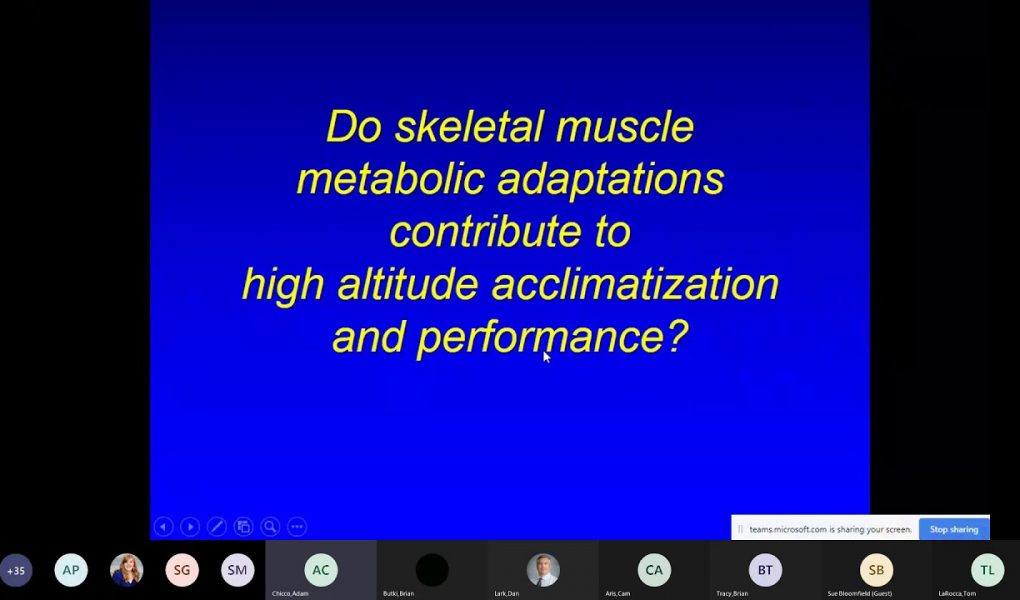High altitude places have attracted humans for centuries, drawn by the challenge, solitude and perspective that reaching them provides. Those who ascend to such locations must contend with a lower partial pressure of oxygen (hypoxia) in the air they breathe. This limits aerobic exercise capacity, but also elicits adaptive physiological responses that enable improved performance during prolonged exposures. Understanding the biological bases of these processes is important not only for climbers, but also for clinicians and scientists trying to distinguish adaptive from maladaptive responses in hypoxia-related conditions, including cardiopulmonary diseases and cancer. In this seminar, I will discuss the results of our research on the metabolic responses of skeletal muscle to high-altitude hypoxia, largely from our participation in the 2012 AltitudeOmics scientific expedition in the Bolivian Andes. This multi-dimensional study provided insights that both confirm and challenge conventional perspectives on how our muscles respond to low oxygen environments, and reveal unexpected contributions of mitochondria, the oxygen-consuming powerhouses of our body cells.
Dr. Chicco is an Associate Professor of Biomedical Sciences, with expertise in cardiorespiratory physiology and metabolism. His laboratory studies how variations in lipid metabolism contribute to the development of cardiovascular disease and diabetes, with a particular interest in the roles of polyunsaturated fatty acids and mitochondria. His research group conducts basic, integrative and translational studies utilizing animal models of human disease, dietary and pharmacological interventions, and genetic gain/loss-of-function approaches to target central regulators of metabolism in health and disease. These studies are complemented by collaborative projects with faculty at CSU and across the country investigating metabolic adaptations to physiological and pathogenic stress in humans, laboratory animals and non-model organisms.
source



